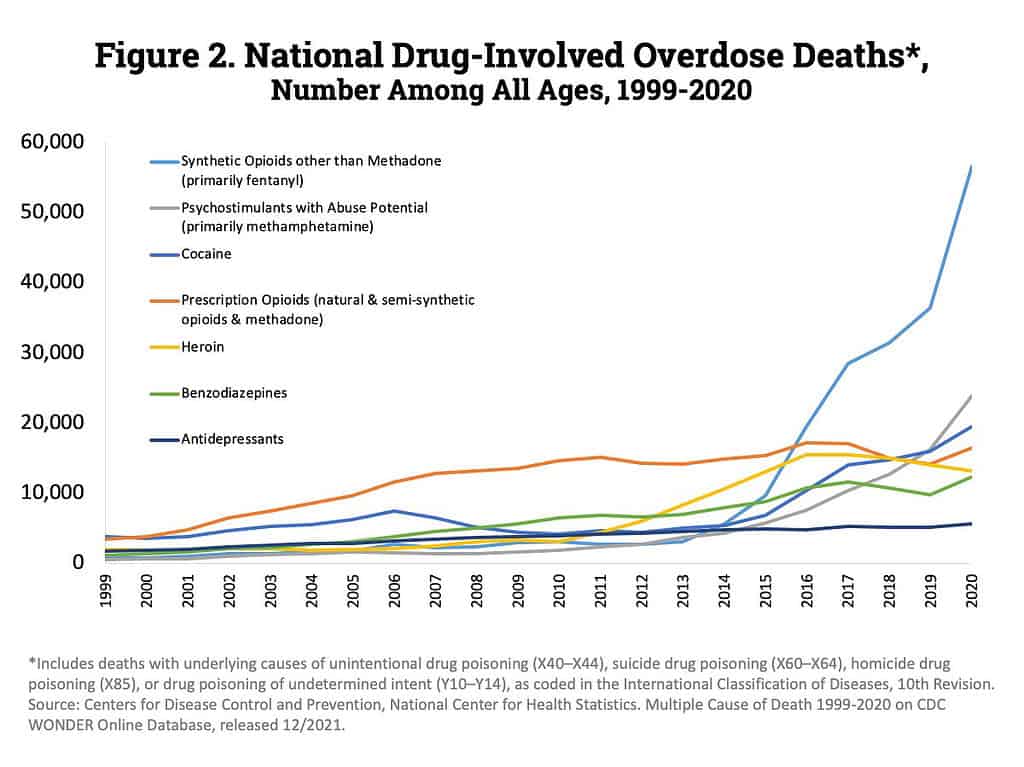The opioid crisis in the US is not slowing down — in fact, drug overdose fatalities soared after the lockdown days of the COVID-19 pandemic. At the core of this epidemic is fentanyl — a potent synthetic opioid used as a pain medication.
“Fentanyl is killing Americans at an unprecedented rate,” said DEA Administrator Anne Milgram. “Already this year, numerous mass-overdose events have resulted in dozens of overdoses and deaths. Drug traffickers are driving addiction, and increasing their profits, by mixing fentanyl with other illicit drugs. Tragically, many overdose victims have no idea they are ingesting deadly fentanyl, until it’s too late.”
Now, researchers have developed a vaccine that prevents the drug from entering rats’ brains, eliminating the ‘high’ that fentanyl offers and helping people stay clear of the drug and avoid overdoses.

Fentanyl, which is 50 times stronger than heroin and 100 times stronger than morphine, is one of the synthetic opioids that kill over 150 Americans every day. In 2020, it killed 91,799 Americans, a 30% increase from the previous year, and in 2021, it killed over 71,000.
In its pure form, fentanyl overdoses are moderately unpredictable — but when combined with other substances, it becomes extremely unpredictable, and almost 90% of fatal fentanyl overdoses include another drug. Fentanyl isn’t causing the opioid epidemic in the US by itself, but it’s an important part of it.
This is why having a way to counteract it in the long-term is so valuable, and researchers believe they’ve done just that. Although the vaccine was only tested in rats, it showed great promise as it not only generated anti-fentanyl antibodies that eliminated the drug, but even eliminated the craving for the drug.
“We believe these findings could have a significant impact on a very serious problem plaguing society for years – opioid misuse. Our vaccine is able to generate anti-fentanyl antibodies that bind to the consumed fentanyl and prevent it from entering the brain, allowing it to be eliminated out of the body via the kidneys. Thus, the individual will not feel the euphoric effects and can ‘get back on the wagon’ to sobriety,” said the study’s lead author Colin Haile, a research associate professor of psychology at UH and the Texas Institute for Measurement, Evaluation and Statistics (TIMES), and a founding member of the UH Drug Discovery Institute.
The side effects associated with the vaccine were mild, which means clinical vaccines in humans can start relatively soon — and researchers are working on exactly that. In addition, the vaccine doesn’t interfere with other opioids, meaning any vaccinated people could still be treated for pain relief with other opioids.
Such a vaccine can’t come in quickly enough. According to the DEA, fentanyl usage is at record highs and shows no signs of stopping; in fact, more and more people seem to be replacing heroin with fentanyl. There are treatments for people actively overdosing, but that is just a short-term solution — there’s no clear-cut way to fight the addiction.
What researchers are doing now is trying to get FDA approval for the vaccine and start large-scale trials. Success in animal tests doesn’t always translate to success in humans, but if everything does work according to plan, then a working vaccine could become available within four years. While this won’t end the opioid crisis on its own, it could be one of the tools that fights it — what’s going on now is definitely not the best.
“Fentanyl use and overdose is a particular treatment challenge that is not adequately addressed with current medications because of its pharmacodynamics and managing acute overdose with the short-acting naloxone is not appropriately effective as multiple doses of naloxone are often needed to reverse fentanyl’s fatal effects,” said Kosten, senior author of the study.
The study was published in the journal Pharmaceuticals






